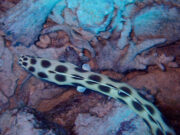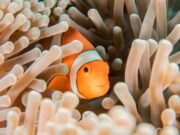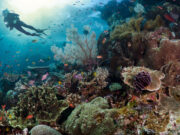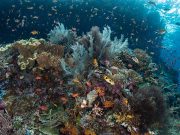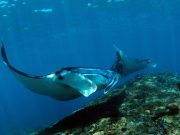With their large brains dolphins have many factors in common with humans.
Dolphins communicate primarily audibly. Whilst the sounds themselves are easy to record the actual meaning of the noises and what the role of it is, is more difficult to decipher.
Whistling Dolphin
Some members of the dolphin family don’t produce whistles whilst for others it is very important for communication.

Each bottlenose dolphin (the most commonly studied dolphin) produces a signature whistle and that comprises a large proportion of the vocal noises it makes.
These signature whistles are most commonly heard when a dolphin is isolated from the rest of the pod, when making contact with others or by a mother frequently whistling to help her calf recognise her.

Dolphins develop their signature whistle early. The process by which a young dolphin chooses its call is still unknown: they appear to learn parts from other dolphins.
They’re able to recognise signature whistles of associates they’ve encountered over periods of more than 20 years.
They also copy other dolphins signature whistles which seems to call other dolphins, much like how humans use names. In fact, dolphins can also precisely replicate human-made whistles.
The large amount of non signature whistles need much more studying.
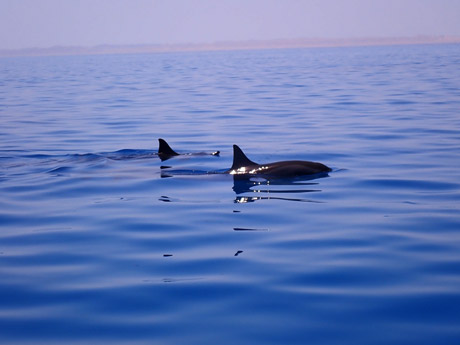
Pops – Courtship and Aggression
Dolphins also produce low frequency “pops” which are linked to echolocation.
“Pops” with higher frequencies are associated with male courtships of females. More frequent pops with head jerks from males are aggression towards other males.
It’s similar to birds with males whistling to attract females whilst repelling other males.
Non-Verbal Signs
Like humans, dolphins effectively communicate without vocal sound. Tail slaps – hitting the water with their tails – produce a loud sound and shock waves that can stun fish. This behaviour is a warning. In County Clare on the west coast of Ireland is a lone dolphin – “Dusty”. She is often friendly and interacts with people, especially those she knows. But when strangers swim up to her and get too close she can become agitated. Like a dog baring its teeth, Dusty slaps the water to show that she is not happy. In 2013, when her signals were ignored, she attacked a swimmer causing serious injury.
It was Dusty who sparked my lifelong interest in dolphins. When I was around 8 years old I was paddling in the sea at Fanore when Dusty swam up right next to me. She was gentle and I have been fascinated with dolphins ever since.

